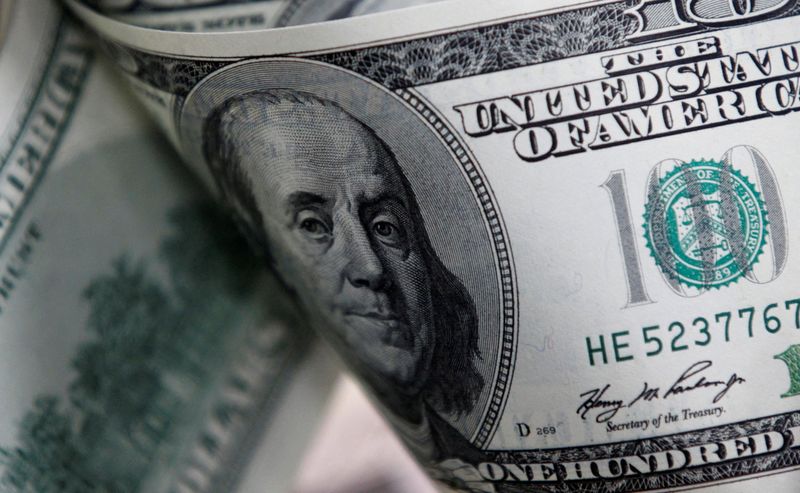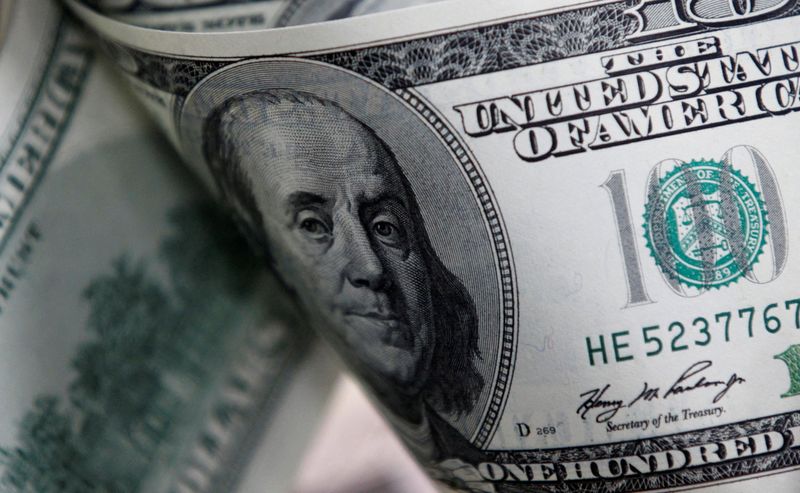Forex
US dollar steadies, Aussie drops after RBA, Chinese trade data

By Stefano Rebaudo
(Reuters) -The dollar rose on Tuesday ahead of U.S. inflation data which could offer clues about the Federal Reserve’s monetary easing path, while analysts assess the likely impact of Donald Trump’s policies when he begins his second term as U.S. President.
The Australian dollar dropped sharply as the Reserve Bank of Australia (RBA) softened its tone on the inflation outlook, while the rally sparked by China stimulus pledges tapered off after weak Chinese trade data.
Money markets are pricing an 86% chance of a 25 bps rate cut by the U.S. Federal Reserve next week, but some analysts warned that Fed hawks could have more weight in the upcoming decisions.
“The Fed’s consensus (median) will be to tilt the outlook in a more hawkish direction than in September or November,” said Thierry Wizman, global forex and rates strategist at Macquarie.
The U.S. dollar rose 0.2% to 151.55 yen, after earlier climbing to 151.71 yen for the first time since Nov. 28.
The , which measures the currency against the yen and five other major peers, rose 0.2% to 106.34.
Macquarie’s Wizman said several key factors are likely to influence the Fed’s future moves: potential inflation arising from the next administration’s policies, the recent slowdown in the pace of disinflation, a lower-than-expected unemployment rate and signs of exuberance in U.S. financial markets.
Market participants see little action before a busy second half of the week with the U.S. data and European Central Bank policy meeting.
An ECB quarter-point cut is baked in, but investors will focus on the communication, which could provide clues about the central bank’s future moves.
The euro dropped 0.26% to $1.0526.
Analysts flagged that the ECB could remove the reference to the need to keep policy rates “sufficiently restrictive”, while President Christine Lagarde might say in the press conference that inflation is broadly on track to fall to the target.
The fell 0.68% to $0.6397 as of 1100 GMT, and earlier dipped to $0.6380, in striking distance of Friday’s low of $0.6373, a level that had not been seen since Aug. 5.
It rose 0.8% the day before after China pledged an “appropriately loose” monetary policy next year.
China’s exports grew at a slower pace in November, while imports unexpectedly shrank, affecting expectations for the Australian economy, as China is its largest trading partner.
Chinese equities eased gains while Hong Kong stocks declined as the initial optimism over Beijing’s policy shift faded.
The RBA held rates steady as expected, but noted the board had gained “some confidence” inflation was heading back to target.
“A full pricing-in (of a rate cut) over the next few weeks would weigh further on the Australian dollar,” said Volkmar Baur, forex strategist at Commerzbank (ETR:), recalling that two labour market reports and the inflation figures for the fourth quarter will be published before the next policy meeting in February.
Swaps now imply there is a 54% chance of a rate cut in February, with a first easing more than fully priced in by April next year.
“While a downside surprise in the fourth quarter inflation could trigger a February rate cut, we think the continued tightness of the labour market and a pick-up in consumption growth point to the Bank only easing at its May meeting,” said Marcel Thieliant, head of Asia Pacific at Capital Economics.
The New Zealand dollar dropped in sympathy with the Aussie, declining 0.68% to $0.5825.
Investors will closely watch China’s closed-door Central Economic Work Conference, which sets key targets and policy intentions for next year.
The yuan strengthened about 0.13% to 7.2589 per dollar in offshore trading, supported by Monday’s surprise shift in Beijing’s monetary policy stance toward more easing to boost the ailing economy.
Elsewhere, the Bank of Canada and the Swiss National Bank decide policy on Wednesday and Thursday, respectively, with deep rate cuts expected from both.

Against Canada’s , the U.S. dollar rose to its strongest level since April 2020 at C$1.41895.
The U.S. currency declined 0.14% to 0.8801 Swiss franc.

 Forex3 years ago
Forex3 years agoForex Today: the dollar is gaining strength amid gloomy sentiment at the start of the Fed’s week

 Forex3 years ago
Forex3 years agoUnbiased review of Pocket Option broker

 Forex3 years ago
Forex3 years agoDollar to pound sterling exchange rate today: Pound plummeted to its lowest since 1985

 Forex3 years ago
Forex3 years agoHow is the Australian dollar doing today?

 Cryptocurrency3 years ago
Cryptocurrency3 years agoWhat happened in the crypto market – current events today

 World3 years ago
World3 years agoWhy are modern video games an art form?

 Commodities3 years ago
Commodities3 years agoCopper continues to fall in price on expectations of lower demand in China

 Economy3 years ago
Economy3 years agoCrude oil tankers double in price due to EU anti-Russian sanctions





















